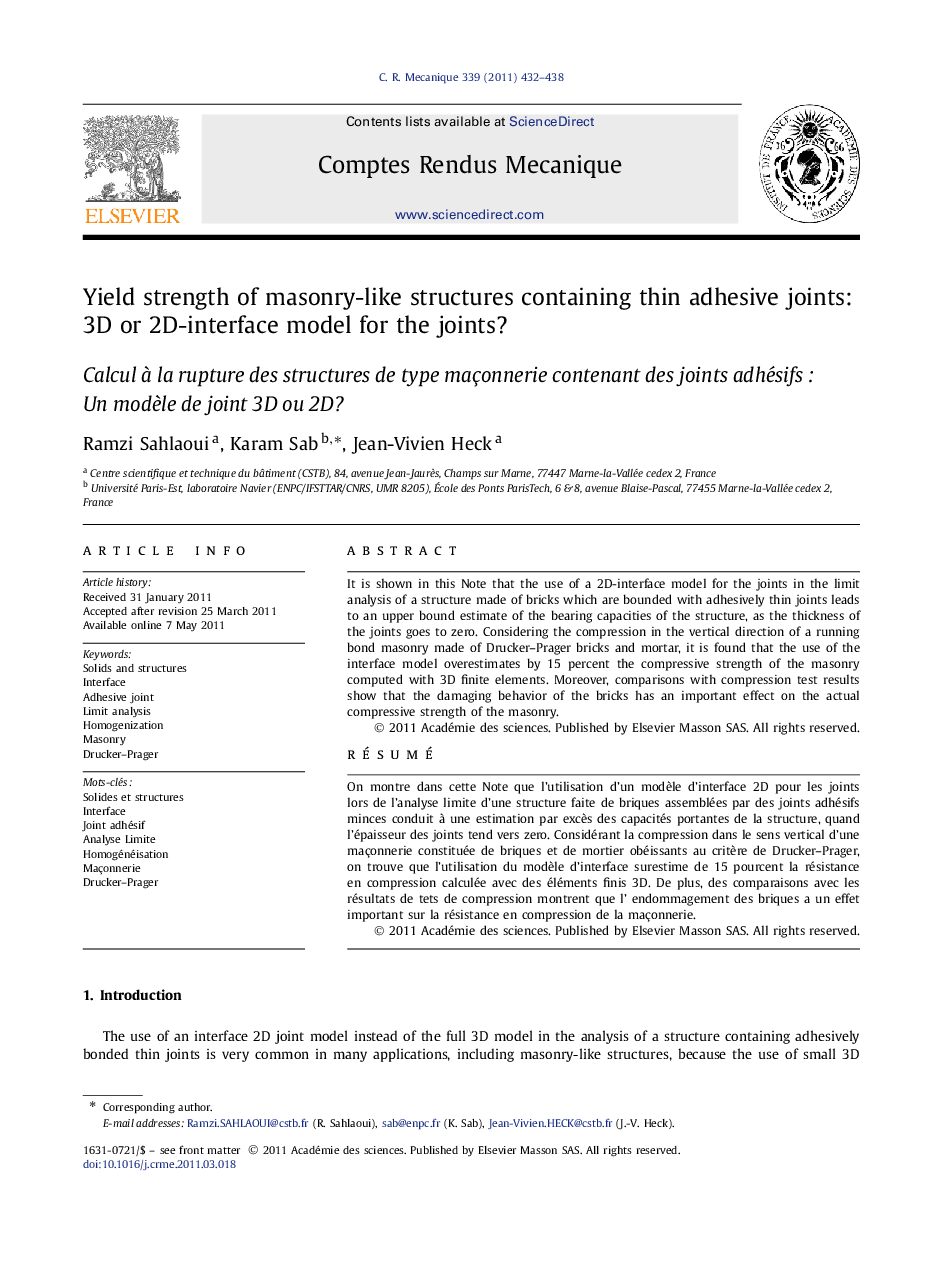| Article ID | Journal | Published Year | Pages | File Type |
|---|---|---|---|---|
| 823987 | Comptes Rendus Mécanique | 2011 | 7 Pages |
It is shown in this Note that the use of a 2D-interface model for the joints in the limit analysis of a structure made of bricks which are bounded with adhesively thin joints leads to an upper bound estimate of the bearing capacities of the structure, as the thickness of the joints goes to zero. Considering the compression in the vertical direction of a running bond masonry made of Drucker–Prager bricks and mortar, it is found that the use of the interface model overestimates by 15 percent the compressive strength of the masonry computed with 3D finite elements. Moreover, comparisons with compression test results show that the damaging behavior of the bricks has an important effect on the actual compressive strength of the masonry.
RésuméOn montre dans cette Note que lʼutilisation dʼun modèle dʼinterface 2D pour les joints lors de lʼanalyse limite dʼune structure faite de briques assemblées par des joints adhésifs minces conduit à une estimation par excès des capacités portantes de la structure, quand lʼépaisseur des joints tend vers zero. Considérant la compression dans le sens vertical dʼune maçonnerie constituée de briques et de mortier obéissants au critère de Drucker–Prager, on trouve que lʼutilisation du modèle dʼinterface surestime de 15 pourcent la résistance en compression calculée avec des éléments finis 3D. De plus, des comparaisons avec les résultats de tets de compression montrent que lʼ endommagement des briques a un effet important sur la résistance en compression de la maçonnerie.
